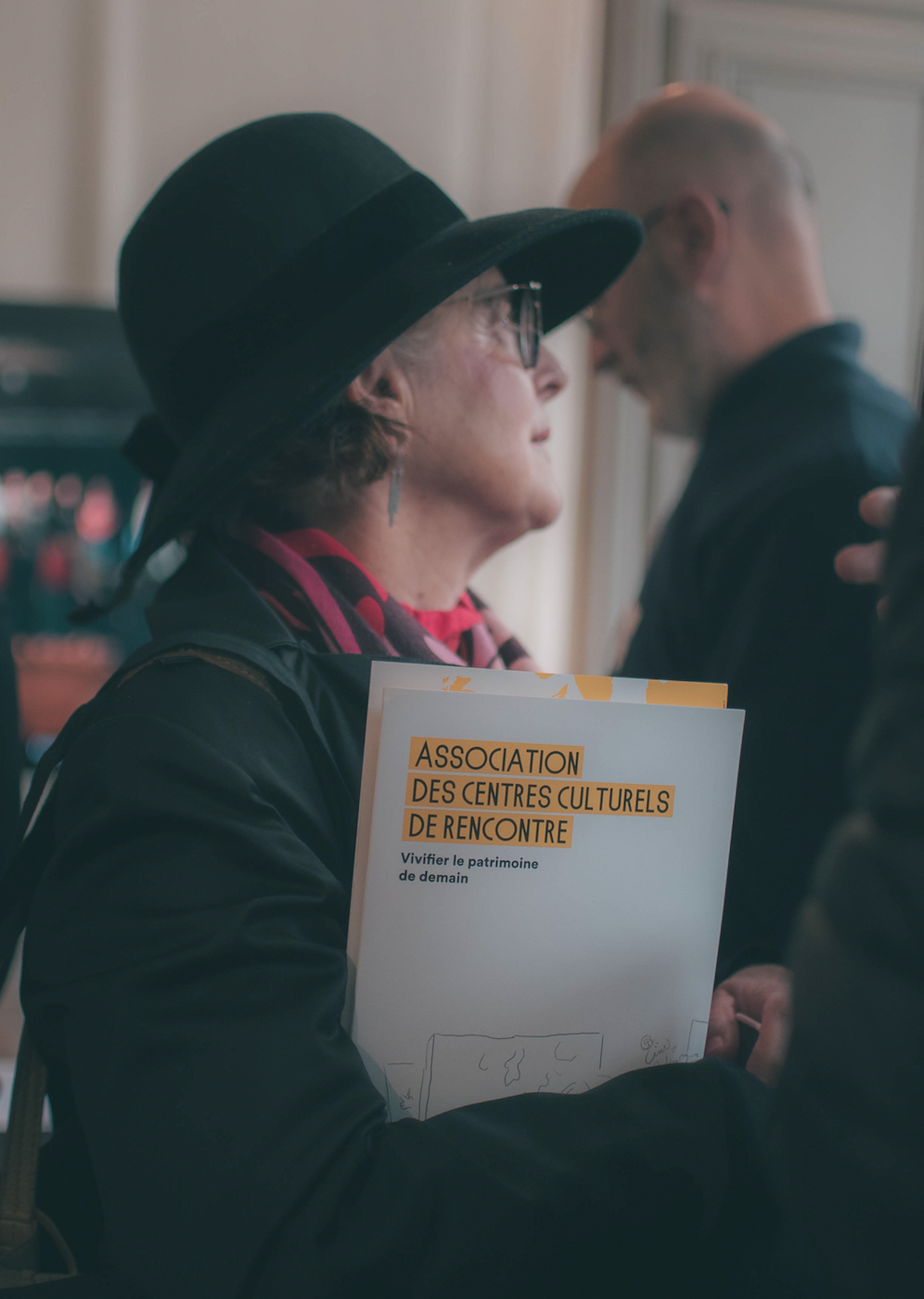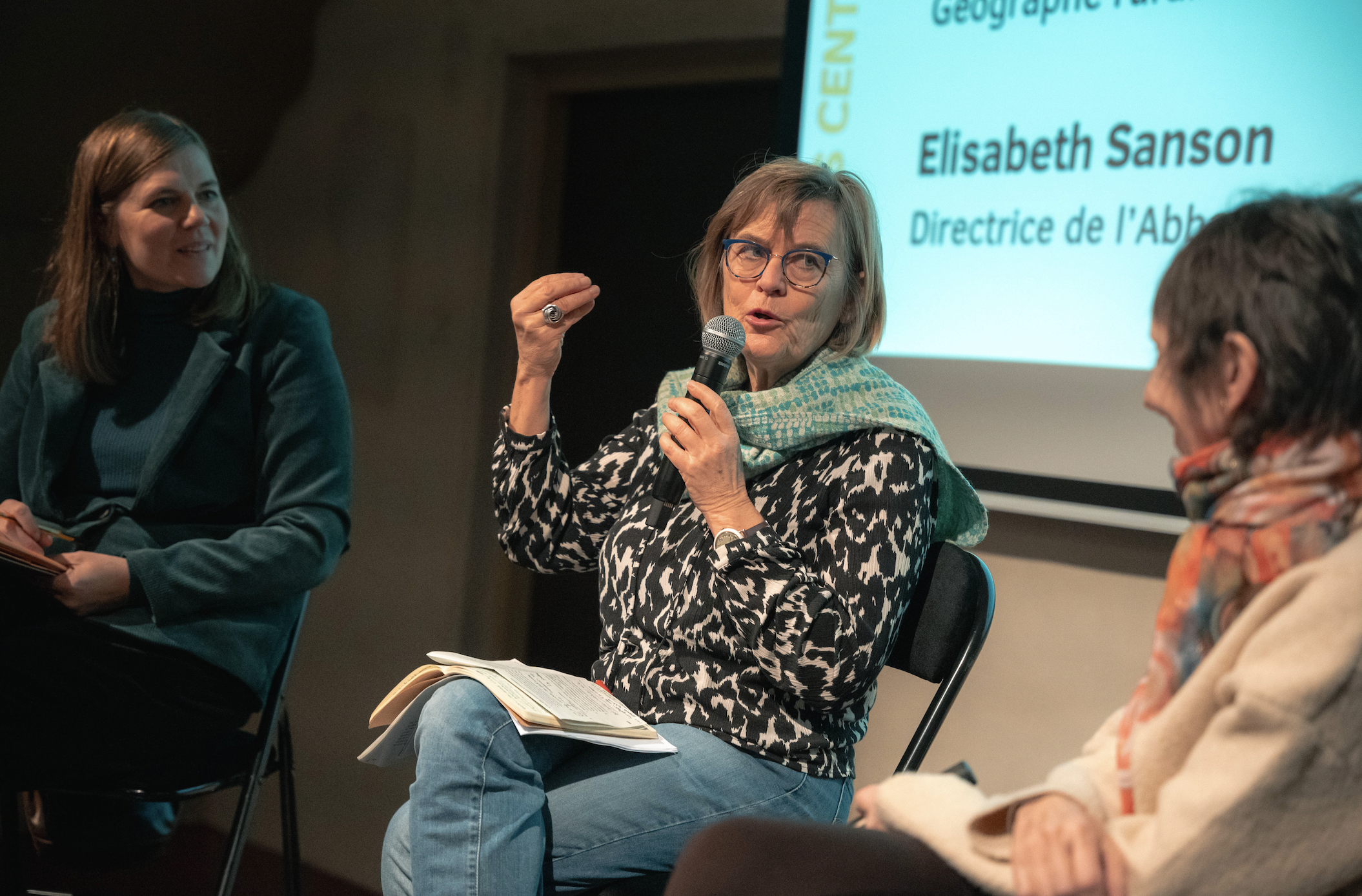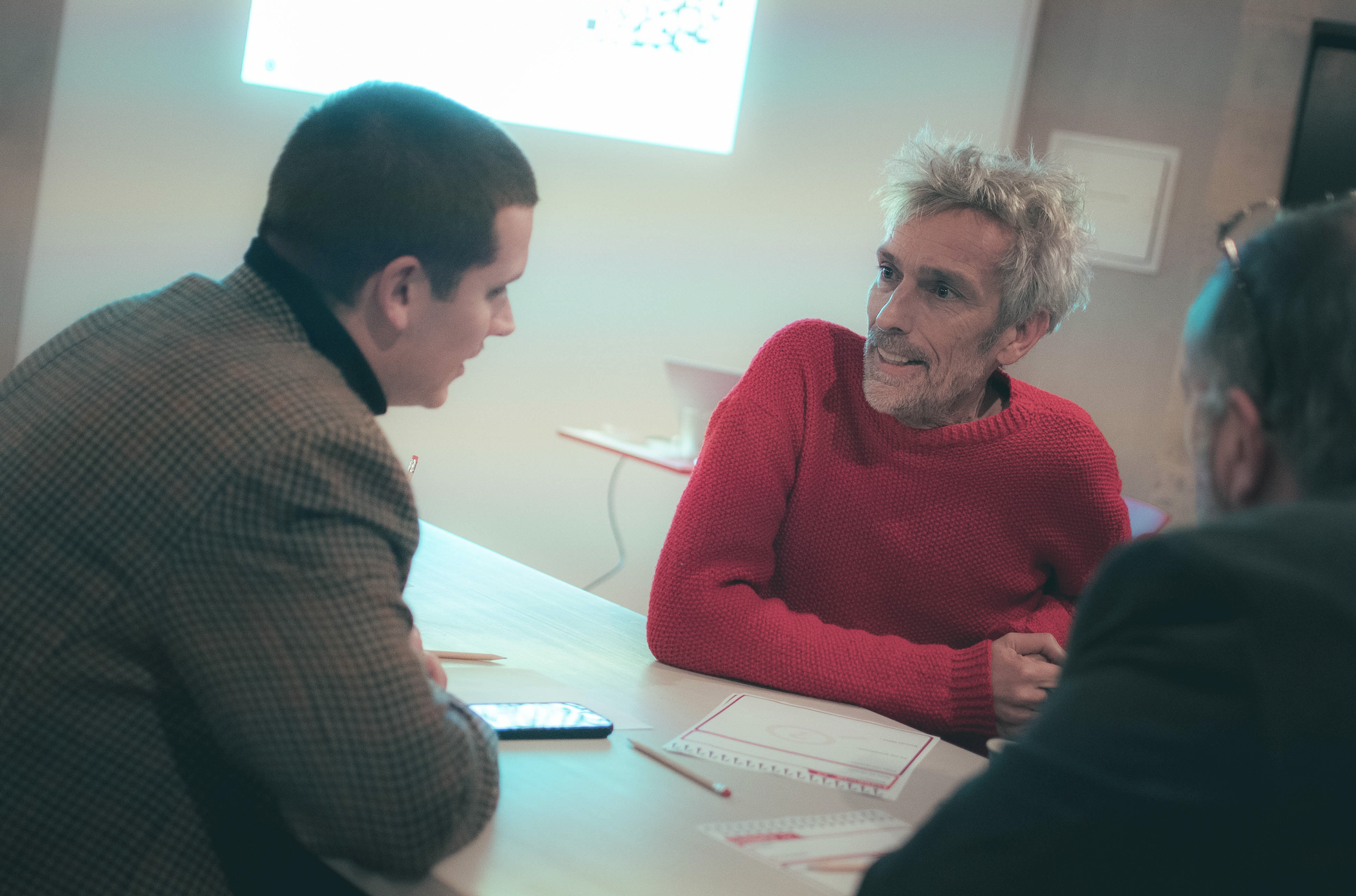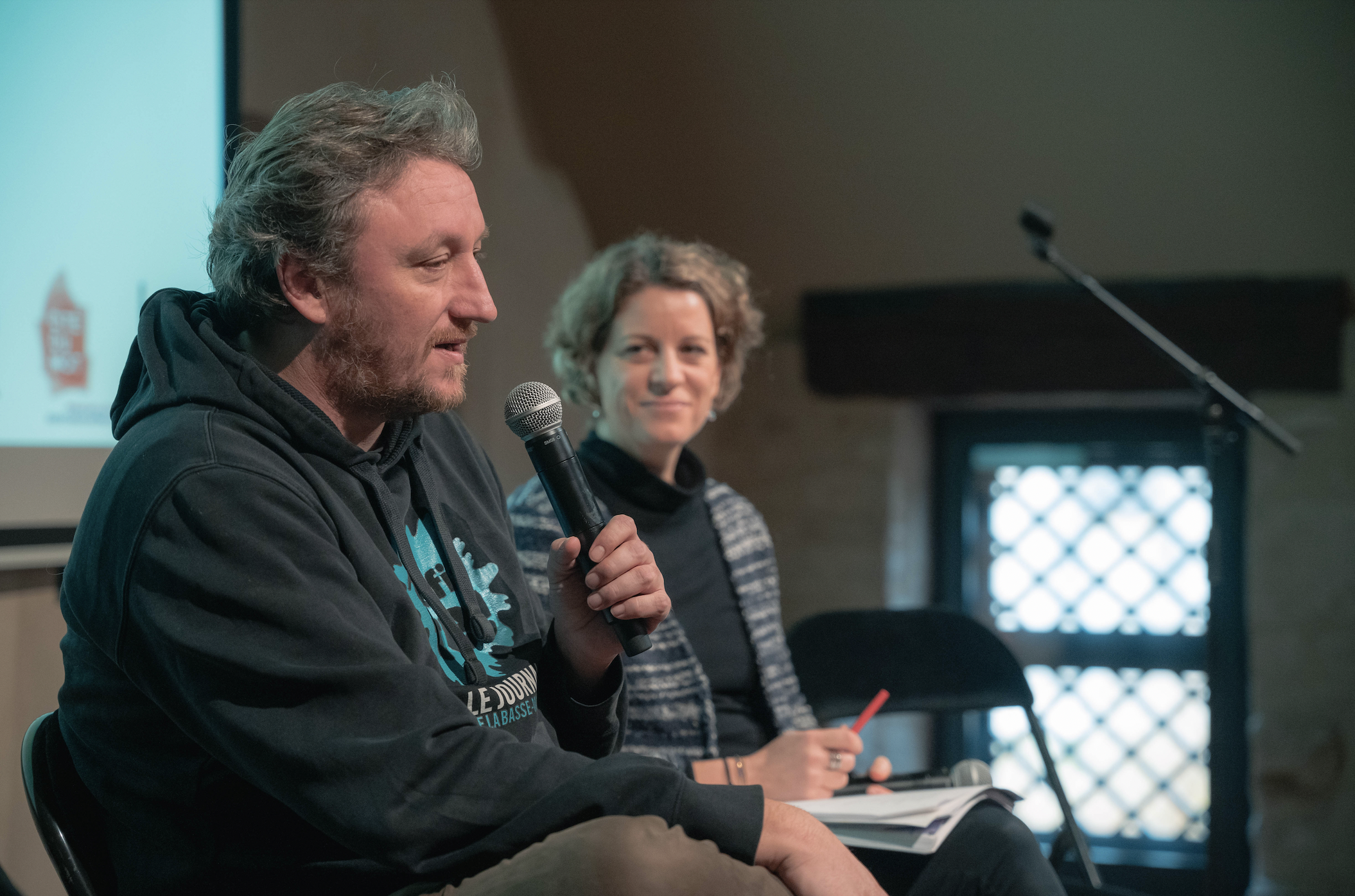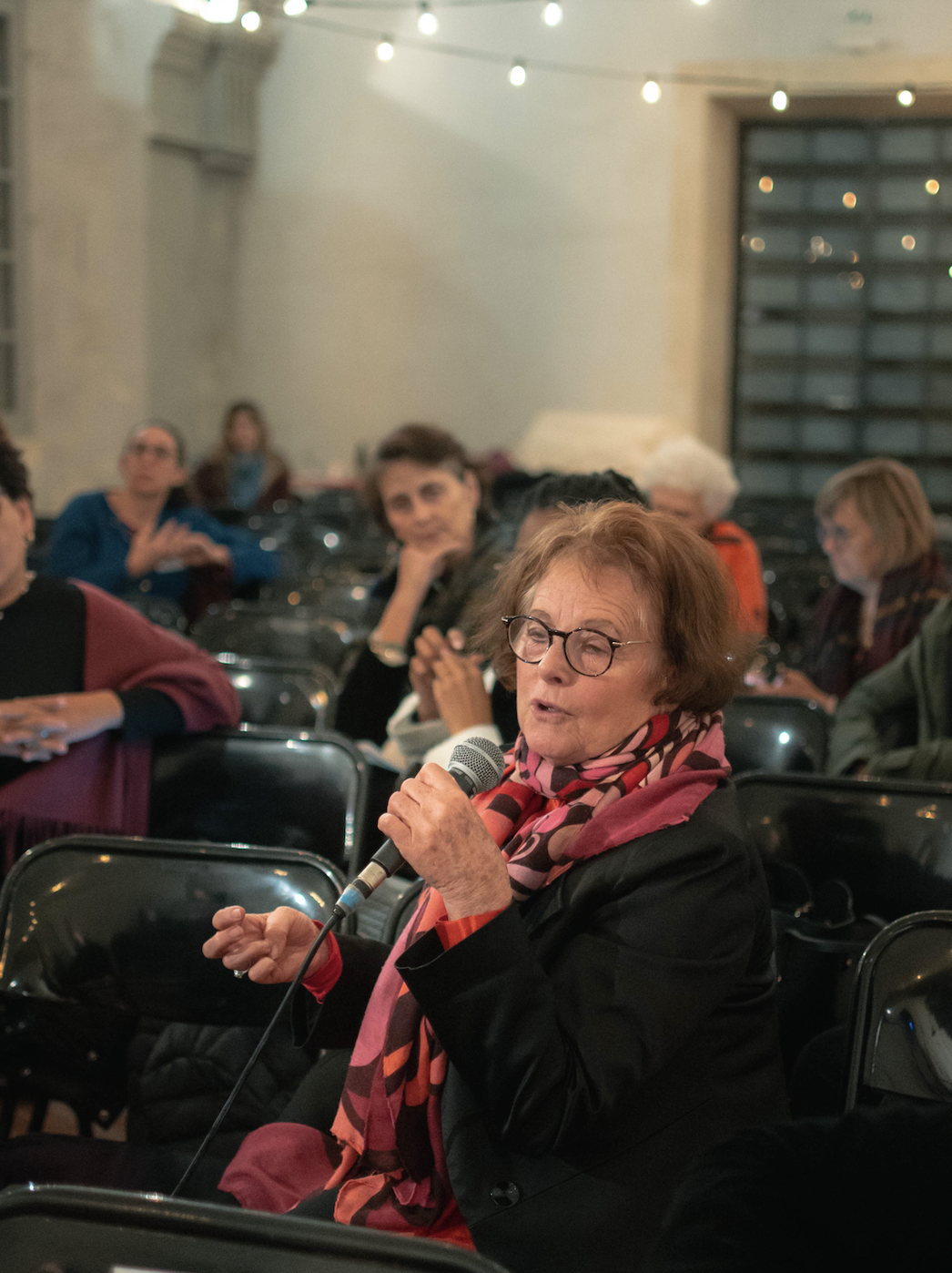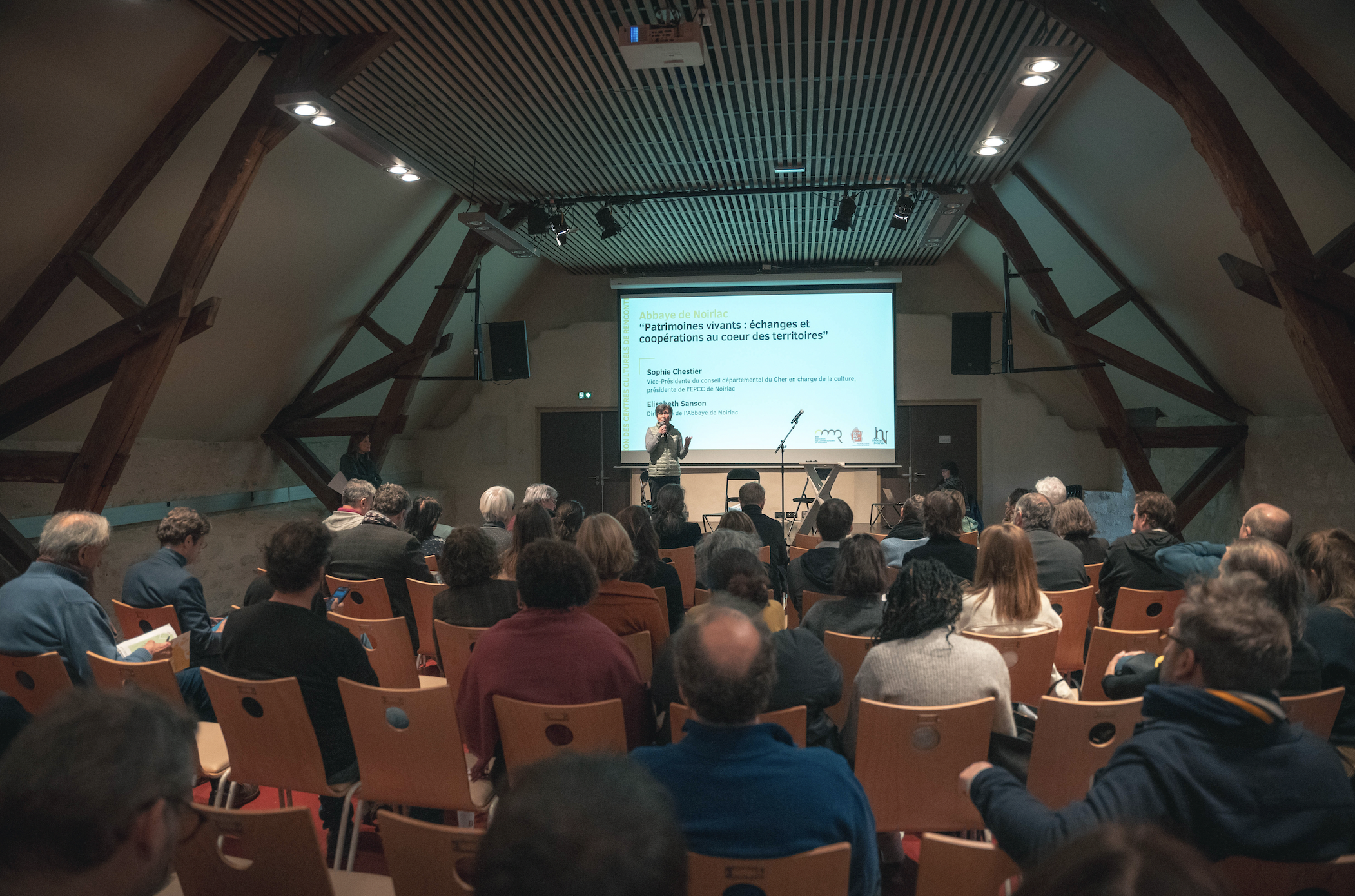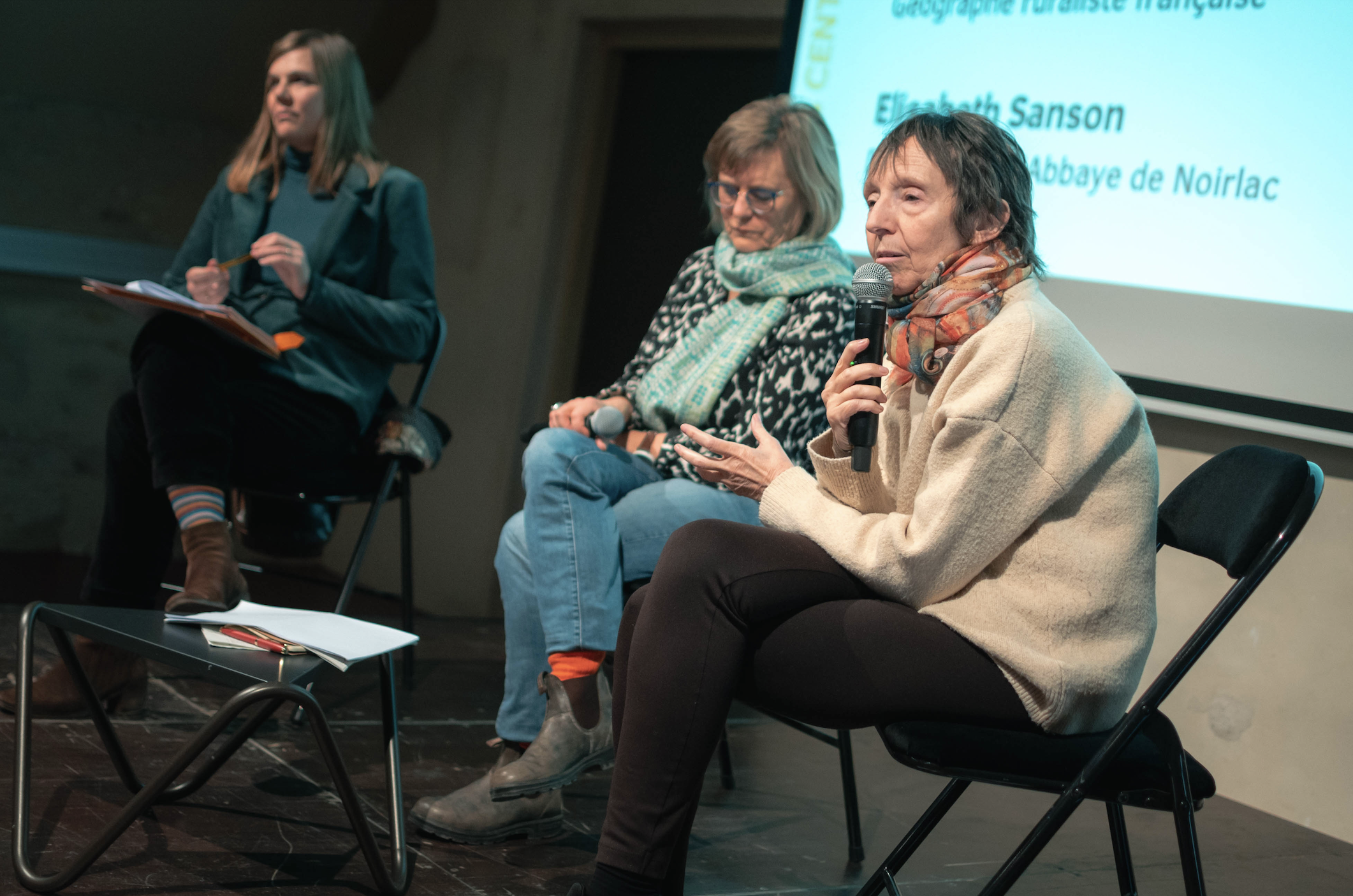On 12, 13 and 14 December 2024, the annual meetings of the Centres culturels de rencontre network took place, organised by the ACCR, the Abbaye de Noirlac and the Cité du Mot, on the theme of ‘Living heritage: exchanges and cooperation at the heart of territories’.
The Rencontres de l'ACCR are an opportunity to examine our practices in the light of the experiences of network members and partners, as well as the wider community of creative and cultural players in the regions.
Faced with a crisis of legitimacy in the cultural sector, there is an urgent need to reconnect with local people, their needs and their desires. While audience surveys have their place, it is worth looking beyond the figures to shed light on the causes of this disaffection and remedy the misunderstandings that have taken root.
/ Places that listen
CCRs have it in their DNA to listen to the local area and to the history of a place, a place that they reinvest and which is the bearer of an infinite number of views, stories and appropriations. The aim is to develop an evolving project in which these approaches can coexist and dialogue while shedding light on contemporary societal issues.
Responsible for the link between these issues and local residents, the CCRs work on the policy of relationships with as much attention as their programming policy, writing a regional project with several voices. Weaving these relationships is a long-term process.
Thomas Desmaison, director of the Théâtre du Cloître, shared his experience and his path to running a national theatre thanks to the universal reference framework for cultural rights, which places human interest at the heart of the specifications rather than just programming. In particular, she had to translate her project by adapting it to the formal expectations of the Ministry of Culture.
For example, cultural action is no longer secondary, but permeates all the other expectations and becomes ‘the relationship with the territory and the people’. Mediation and creation are no longer opposites, but mutually nourishing insofar as mediation can also precede creation: shows are a resource and not an end in themselves. This has led to the creation of ‘artistic and civic bubbles’ around each project. The show never arrives on its own; on the contrary, it is always fuelled by EAC and cultural action initiatives devised in conjunction with the local area, with parallel residencies enabling reflection on the issues raised, and so on.
As part of this horizontal approach, a co-programming committee of around fifteen volunteers meets every three weeks from October to February. In February, the group gets down to the nitty-gritty of organising the pre-show activities, including open debates, EAC activities and so on. Based on a call for volunteers circulated in September, the Théâtre du Cloître invites the general public to take part. Volunteers are then selected on the basis of their motivation and their ability to ‘bubble up’, i.e. to judge artistic projects that resonate with local life. Although these committees are not representative of the local area, because the theatre does not have the resources of survey institutions, the process is renewed with people who are not necessarily regulars.
Thomas Desmaison remains the guarantor of the programming, insofar as he is legally responsible for it, and ensures that the group is coordinated and that everyone's rights are respected during these exchanges.
These co-programming committees call into question the role of the programmer, who would be the sole guarantor and the only one in a position to know what would appeal. They offer a democratic and emancipatory model.
/ Stories for heritage
The conference put forward the idea that stories could be a tool for cultural institutions to reinvent themselves. Stories make it possible to question and define what constitutes heritage for a community. The very definition of heritage, which is not limited to the built heritage but includes the cultural, the intangible, the natural, the vernacular, the living, etc., was also discussed.
Heritage and culture have often been dissociated, with heritage remaining associated with architecture as a tool for attracting tourists rather than as an object shared and discussed with local people. Stories are a means of reconnecting with the emotions, and they help to bring the link with heritage to life.
The civic dimension inherent in this approach allows us to reflect on our heritage and our place in the world. Collecting the stories requires us to position ourselves as equals and to consider the people who share as full players in the project and not as objects of research. It is also important to leave room for the subjectivity of the interviewees and not to deprive people of their own words, i.e. not to recompose or re-analyse the words collected according to a predefined prism.
It is important not to reduce narratives to the spoken word, but also to take an interest in artistic practices. Sylvie Pébrier, a musicologist, gives the example of the classical music world, which responds to numerous staging codes. These rituals are narratives that convey a certain image. Through this codified aesthetic, they establish a distance between the direct experience of the music by the spectators and the practitioners. Giving up the attachment to greatness has a symbolic cost that the cultural sector is not always willing to pay.
/ Rurality as a cultural asset
The speakers endeavoured to highlight the identities and richness of these territories, and to claim rurality as a cultural asset in the sense of a place of possibilities. Indeed, the CCRs are not modelled in advance but write their projects according to the territory, which is a place of creativity.
The discussions raised questions about the specific characteristics of the rural world and, above all, countered the preconceived notion of a cultural desert. In fact, no space is completely empty, so once again, the point of words is important. While the lack of recognition and a certain feeling of abandonment, whether in terms of difficult access to healthcare or limited mobility, are undeniable, the speakers considered how to turn these shortcomings into opportunities.
The INSEE's new definition of rural areas, which is no longer a statistical definition, provides a qualitative and positive perspective. This is not neutral insofar as we are defining development policies accordingly.
In particular, it has brought to light different ways of living together, linked to different types of building, spatial organisation and travel. The rural world is also constantly attached to the living world, and cannot be thought of in isolation from it. So we need to share new narratives that highlight these specific features. To do this, rural culture can be enhanced, for example, through storytelling, know-how or landscapes, all of which are resources for the region.
/ Example - Mattang, a participatory geography and territorial intelligence tool
Mattang is a participatory geography and territorial intelligence initiative coordinated by the Maison forte de Monbalen (currently being considered as a Cultural Encounter Centre). This sensitive cartography invites residents to think about a sustainable and creative territory.
In the face of a crisis of meaning in cultural policies, this relational mapping of the territory helps to emancipate people and create new narratives that embody the shared culture. The cooperative approach also makes it possible to think horizontally about modes of governance.
Residents are invited to answer questions put to them by cultural players to find out about their relationship with the area, culture, the living world, etc. The words collected are processed digitally so that they can be compared and counter-narratives to those put forward by tourist and institutional players can emerge, or at least embodied narratives that provide an intuitive approach to the area.
By making the cultural player the operator of the system, this solution makes him or her a listening player, the facilitator of a shared narrative, a storyteller of the area, and places him or her at the centre of ongoing consultation. This solution is based on data present in the ‘blind spots’ of local policies, often ignored by territorial diagnoses which, with their quantitative approach and urban vision of development, condemn the most unique areas and those most in difficulty.
Based in part on artificial intelligence (AI), this system produces and animates a capital of relational knowledge to invent the landscape of creative and ideative citizen communities. As the aim is to create a space for ongoing debate, the data supplied by the AI is put up for public debate before use. In this way, the AI is simply a third party and not the heart of the project.
This performance also makes it possible to measure where the alliances are in the area and helps to approach politically-motivated groups by knowing what points to approach them about, given that the AI does this work of linking the words used with concepts.

